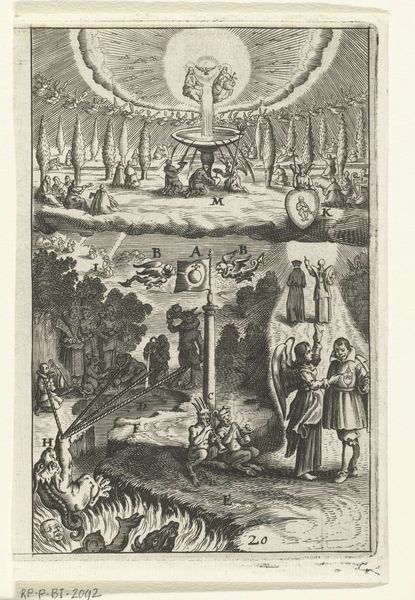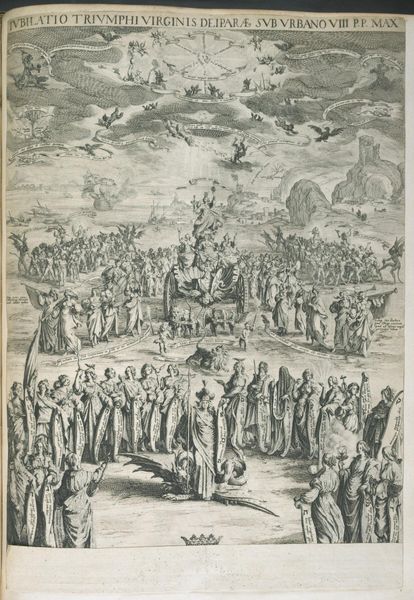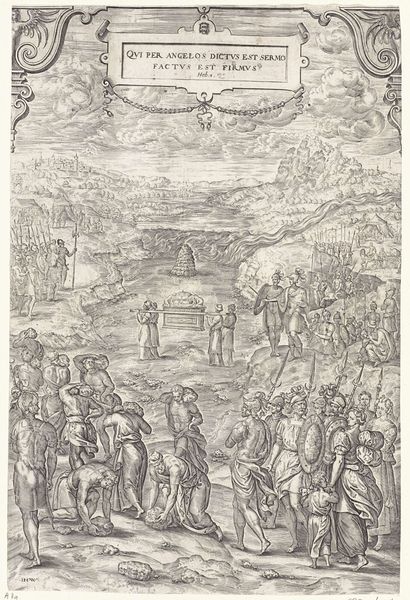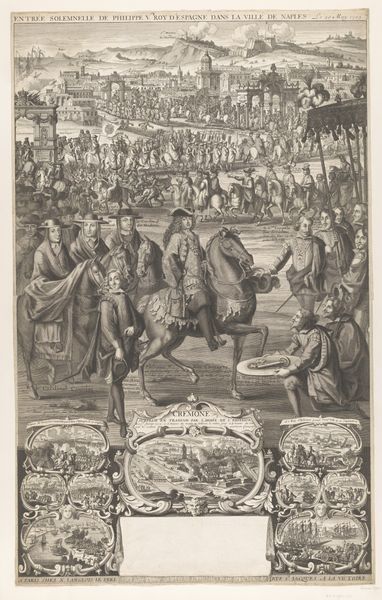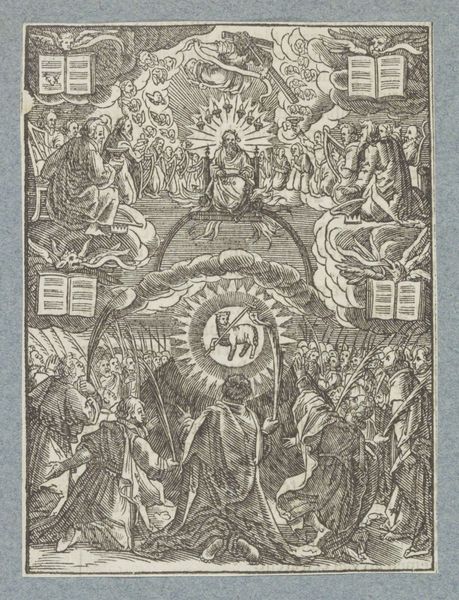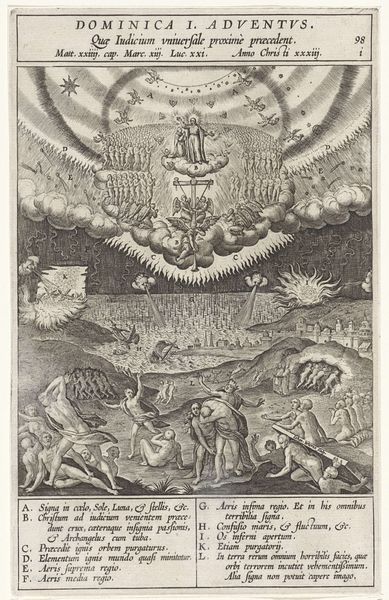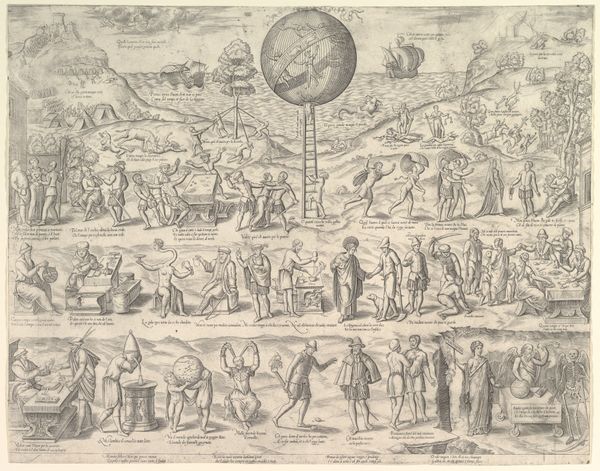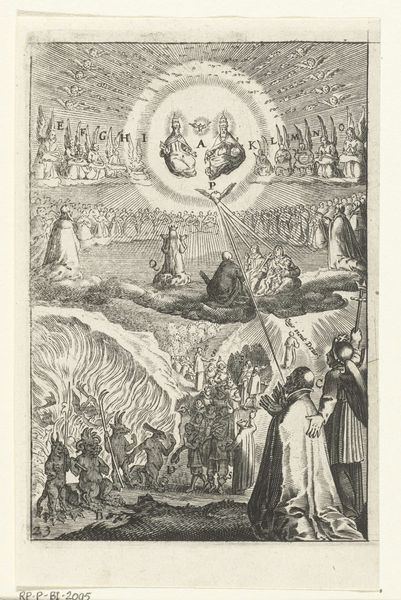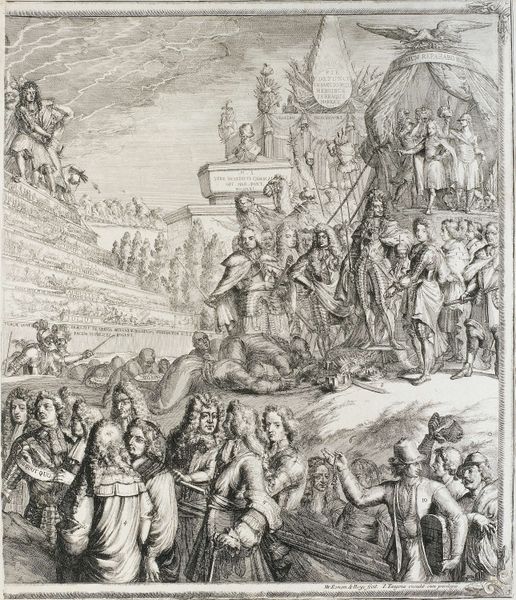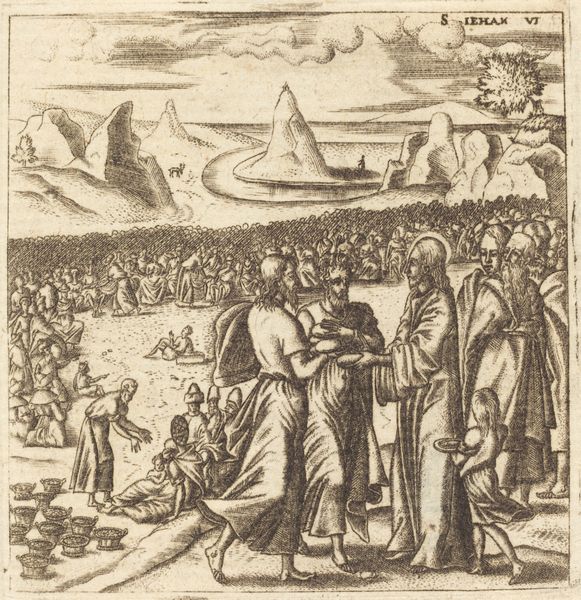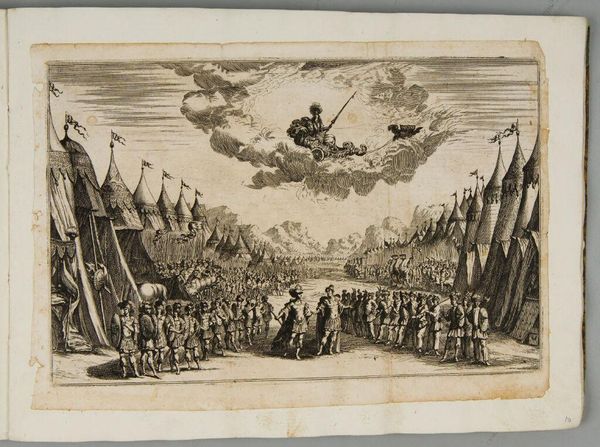
The Lord assigning duties to the three estates 1565 - 1567
0:00
0:00
drawing, print, ink
#
drawing
#
allegory
# print
#
figuration
#
11_renaissance
#
ink
#
history-painting
#
northern-renaissance
Dimensions: 200 mm (height) x 243 mm (width) (bladmaal)
Curator: It strikes me as an ambitious composition. At first glance, it's overwhelmingly detailed, even chaotic, yet there's also something calming about its linear quality and the muted tones of the print. Editor: Indeed. What you're observing is characteristic of Northern Renaissance art, which often married the earthly and the divine in such ways. This ink drawing/print created sometime between 1565 and 1567 by Philips Galle is entitled "The Lord Assigning Duties to the Three Estates". Galle attempts to present an ordered worldview of social structure divinely ordained. Curator: "Divinely ordained" hits the nail on the head. Look at how carefully he has structured it. God and the elect in the Heavens at the top. Below that, the “three estates”— Nobility, Clergy, and Commoners— with each group further stratified by size, perhaps reflecting social rank and power, seemingly drawing power from above. What could those "duties" be that he is referencing? Editor: In sixteenth-century social and political thought, the 'duties' refer to the specific roles and responsibilities assigned to each social class. The nobility, for example, had a duty to provide governance and military protection; the clergy provided spiritual guidance; and the commoners, essentially everyone else, were responsible for labor, supporting the other two estates. The very imagery of a divine figure assigning such duties reinforced social order and hierarchy. Curator: It's a compelling way to visualize societal structure and values, the symbolism resonating far beyond its time, the same social constructs exist in current times in subtle ways, though there may have been shifts on the focus on nobility, or perhaps expanded versions of 'clergy'. However, this piece could easily be seen as oppressive as well, given the time of history that it stems from. Editor: Absolutely, this representation underscores power dynamics. But more than oppression, I think this drawing acted as propaganda of its time; and was crucial in shaping public perception. It made those hierarchical systems seem not only natural but part of a divinely sanctioned order, it influenced social behavior at its root. The layers and detail reinforce these hierarchies and thus promote them. Curator: Thank you, it offers a crucial snapshot into societal norms and values of the period. Seeing these images together definitely helps us connect more deeply with history and contemplate societal shifts over time. Editor: It certainly urges one to consider art’s vital role not merely as a mirror reflecting reality but also as an active agent shaping our understanding of the world around us.
Comments
No comments
Be the first to comment and join the conversation on the ultimate creative platform.
